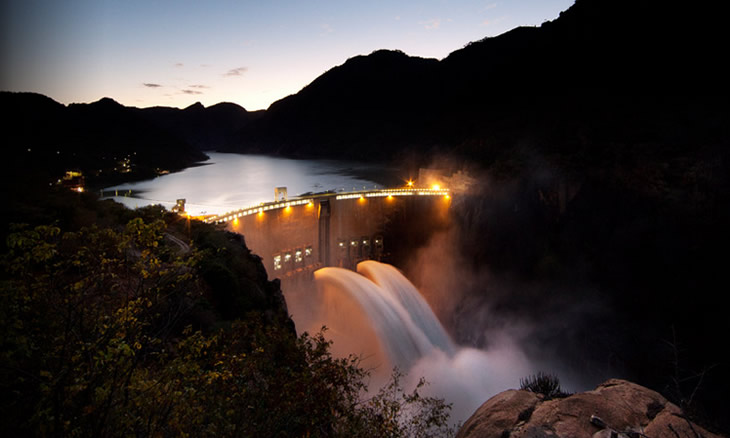Mozambique: Coral Sul tax payments expected to reach 16 billion dollars
Mozambique: Cahora Bassa to invest €500M to increase power output by 5%

FILE - For illustration purposes only. [File photo: HCB]
The Cahora Bassa hydroelectric scheme, in the centre of Mozambique and one of the largest dams on the African continent, plans to increase its production capacity by 5%, following investments of €500 million, according to the company’s board of directors.
“Cahora Bassa’s good operational and financial results are a reflection of the performance of the human resources staff who, under the management team, have been able to lend their knowledge and expertise,” recognises the chairman of the board of directors, Boavida Lopes Muhambe, in the 2022 report and accounts, sent to investors this month and to which Lusa had access today.
For the director, these results “also demonstrate the selfless commitment of human resources to their work” in a context “in which the equipment requires strategic investment to rehabilitate and modernise it”.
“The third phase of the rehabilitation of the Songo substation, Brownfield Phase III, and the second phase of the rehabilitation of the southern hydroelectric power station, Reabsul 2. The realisation of these projects will improve operational performance levels, extend the useful life of the generation and conversion assets to a further 25 years and also increase the plant’s production capacity from the current 2,075 MW to a further 5%,” the report said.
The Reabsul 2 project is expected to cost $207 million (€189.4 million) and according to the company is due to go ahead in 2024. Brownfield Phase III will cost $321 million (€293.7 million) and “will be implemented in parallel with the Reabsul 2 project”.
The hydroelectric company says that the increase in installed capacity, equivalent to an extra 105 MegaWatts (MW), will make it possible to increase the revenues of the Cahora Bassa hydroelectric project “in the medium and long term”.
In 2022, HCB reached its highest electricity production in the last five years and grew by 5% compared to 2021, to 15,753.5 GigaWatt-hours (GWh), according to previous figures from the company.
The 2022 peak production of the hydroelectric plant, whose effective control was handed over by Portugal to the Mozambican authorities precisely 16 years ago (27 November 2007), compares with 2015 when it reached a total production of 16,978.4 GWh.
Cahora Bassa en ded 2022 with 780 employees and profits of 9.2 billion meticais (€131.6 million), an increase of 9.3% compared to 2021.
Commercial operation of the dam began in 1977, with the transmission of the first 960 MegaWatts (MW) produced by three generators, compared to the current installed capacity of 2,075 MW, according to Cahora Bassa data.
The company recalls that two milestones made the ‘Mozambicanisation’ of the project possible after Mozambique’s independence.
The first took place on 31 October 2006, with the signing of the protocol containing the necessary conditions for the reversion and transfer of control from Portugal to the Mozambican state, and the second took place a year later, with the completion of the reversion on 27 November 2007.
The Cahora Bassa reversion agreement allowed control of the dam to pass from the Portuguese state to the Mozambican counterpart, in an event described by the then Mozambican head of state, Armando Guebuza, as “Mozambique’s second independence”.
The Cahora Bassa reservoir is the fourth largest in Africa, with a maximum length of 270 kilometres and 30 kilometres between banks, occupying around 2,700 square kilometres and an average depth of 26 metres.
The dam is located in a narrow gorge of the Zambezi River and was built from 1969 to 1 June 1974, when the reservoir began to fill.
In August, Cahora Bassa said it was considering reactivating the new power station project to the north, given the growing demand for electricity in the region.













Leave a Reply
Be the First to Comment!
You must be logged in to post a comment.
You must be logged in to post a comment.